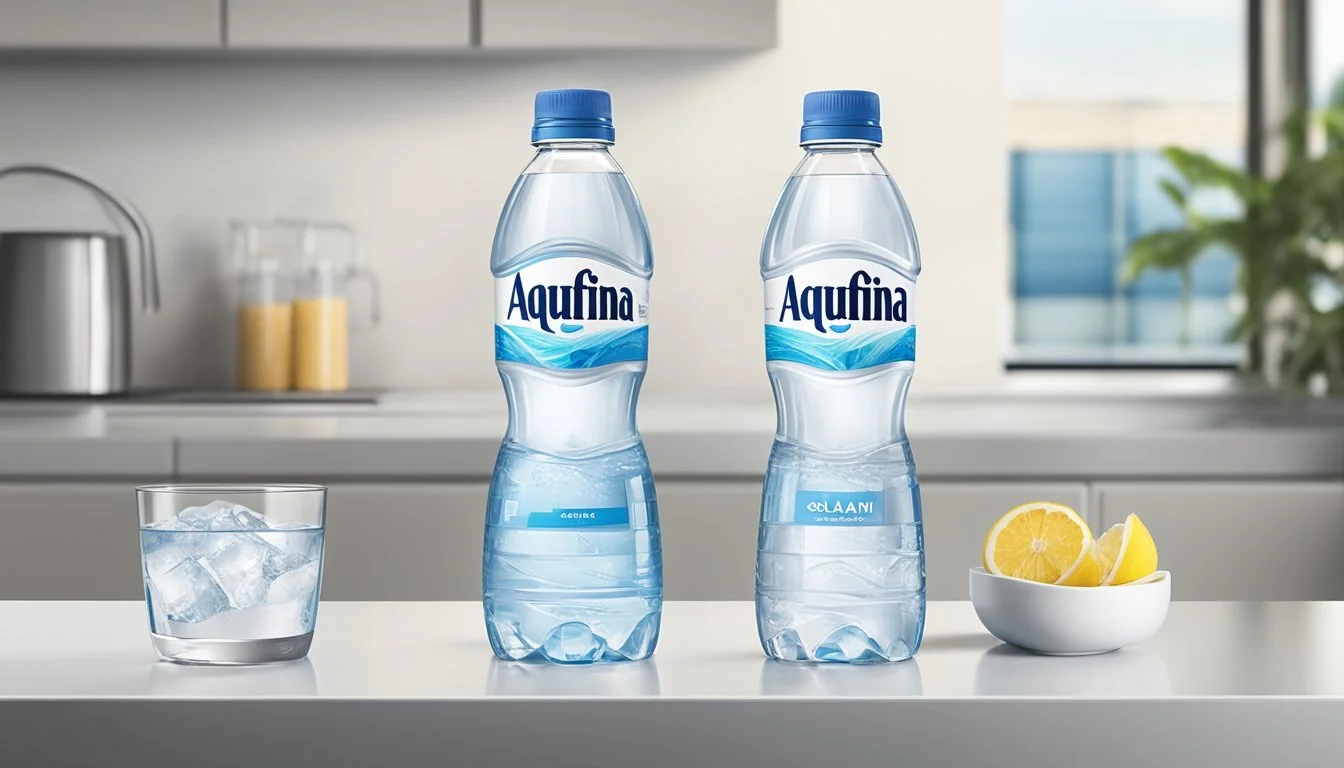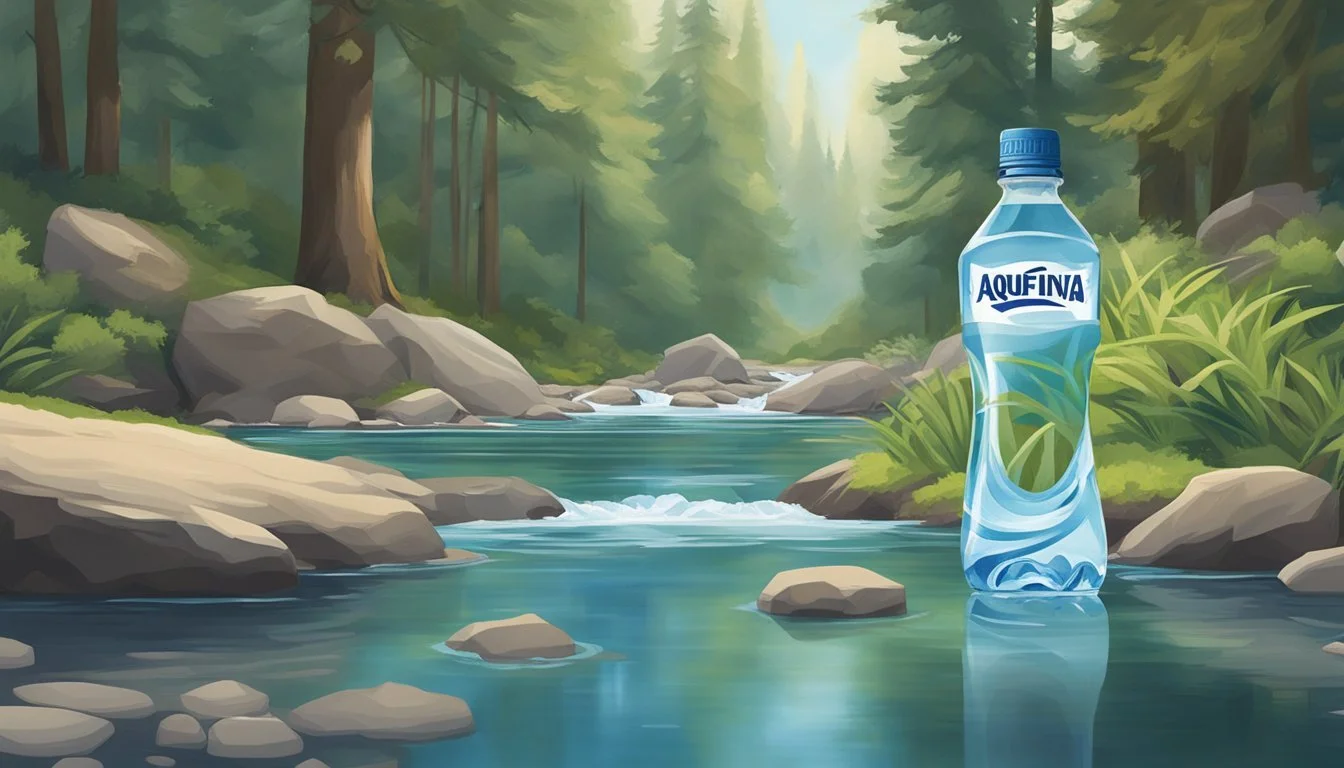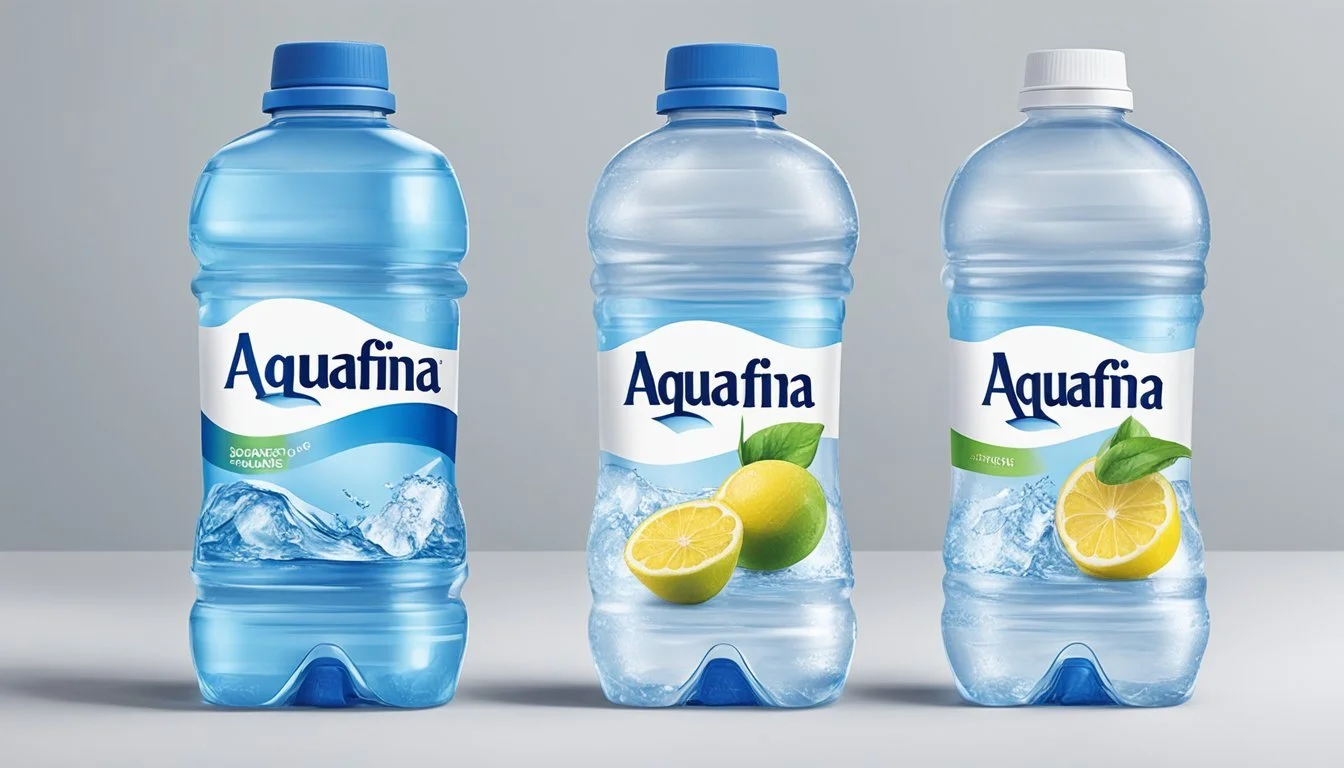Aquafina vs. Solán de Cabras
A Comparison of Bottled Water Quality
Aquafina and Solán de Cabras stand out in the crowded market of bottled water. Aquafina, a product of PepsiCo, is renowned for its rigorous 7-step HydRO-7 filtration process, ensuring exceptionally purified water. This process removes more substances than most other brands, which makes it a favorite among many health-conscious consumers.
Solán de Cabras, on the other hand, hails from Spain, drawing its water from a single protected spring in the Serranía de Cuenca. This natural spring water is celebrated for its balanced mineral composition and the distinctive cobalt blue bottle, which has become an icon of premium quality. Compared to Aquafina, Solán de Cabras offers a smooth taste attributed to its unique mineral blend.
For those prioritizing purity and rigorous filtration, Aquafina is the superior choice. Meanwhile, those seeking a naturally sourced water with a refined taste often prefer Solán de Cabras. Both brands cater to different preferences, ensuring there is a suitable option for every bottled water enthusiast.
History and Origin of Brands
Aquafina and Solán de Cabras are two distinct bottled water brands with unique origins and histories. Aquafina is linked with a major American corporation, while Solán de Cabras has roots that trace back thousands of years in Spain.
Origin of Aquafina
Aquafina was established by PepsiCo in 1994. The brand began its journey in Wichita, Kansas, a place better known for its aircraft manufacturing. Unlike its humble beginnings, Aquafina quickly gained popularity and expanded its distribution across the United States.
The production of Aquafina involves a rigorous purification process to ensure its consistency and quality. This process includes reverse osmosis and other filtering methods to remove impurities and minerals, making Aquafina's water taste clean and refreshing.
Today, Aquafina is not just limited to plain bottled water. The brand has diversified, offering flavored waters and even extending to skin care products. PepsiCo’s extensive distribution network has played a significant role in making Aquafina a household name in the bottled water industry.
Origin of Solán de Cabras
Solán de Cabras has a storied history that dates back over 3,600 years. The origin of this Spanish brand lies in the Serranía de Cuenca, where natural spring water is sourced. The area is known for its pure and mineral-rich water, which has been historically celebrated for its health benefits.
According to records, Solán de Cabras has been associated with therapeutic properties since the 18th century. It gained recognition and was officially declared a medicinal water, being used in health spas and treatments. Today, Solán de Cabras is bottled at the source, preserving its natural purity and mineral content.
The brand positions itself as a beacon of purity and authenticity in a market often dominated by artificial processes. Solán de Cabras continues to be a symbol of natural excellence and tradition, appealing to consumers who value the integrity of their bottled water.
Water Source and Purification
Aquafina and Solán de Cabras are both notable names in the bottled water industry. Aquafina focuses on advanced purification techniques, while Solán de Cabras emphasizes the natural purity of its source.
Aquafina Purification Process
Aquafina sources its water primarily from public water supplies. The brand is known for its rigorous HydRO-7 filtration process.
This process involves seven stages, including reverse osmosis, which effectively removes contaminants. Reverse osmosis is crucial because it forces water through a semipermeable membrane, filtering out impurities and ensuring high purity.
In addition to reverse osmosis, Aquafina's purification regimen includes carbon filtration and ozone sterilization. These methods further eliminate any residual tastes or odors. Each bottle surpasses the Federal Drug Administration's (FDA) purity standards, delivering consistently clean and safe drinking water.
Solán de Cabras Source and Purity
Solán de Cabras stands out for its natural spring water, sourced from the Serranía de Cuenca in Spain. This natural water is renowned for a history dating back over 3,600 years.
The water originates from ancient thunderstorms, making its way through layers of bedrock and collecting minerals naturally. The spring is situated in a remote and protected area, ensuring minimal contamination and maintaining high purity levels.
There is no extensive purification process required for Solán de Cabras. The water’s cleanliness and mineral content are inherent, providing a robust, naturally pure drinking experience. The natural spring water meets stringent FDA regulations for bottled water, emphasizing its authenticity and quality.
Taste and Mineral Content
This section provides a detailed comparison between Aquafina and Solán de Cabras, focusing on their taste profiles and mineral content. Both factors play crucial roles in their overall appeal and quality.
Taste Profile Comparison
Aquafina is known for its pure, clean taste, primarily due to its rigorous purification processes. The flavor is often described as crisp and refreshing but can lack depth because it is highly purified water with no significant mineral content.
Solán de Cabras, on the other hand, offers a more nuanced flavor profile. Sourced from natural springs in Spain, this water has a subtle, smooth taste that hints at its natural mineral content. It has a slightly sweet undertone, making it stand out among other bottled waters.
In summary, Aquafina provides a straightforward, clean drinking experience, whereas Solán de Cabras offers a more complex and naturally influenced flavor.
Mineral Content Analysis
Aquafina undergoes processes like reverse osmosis, which strip away most minerals. This results in water that is almost devoid of mineral content. While this contributes to its pure taste, it also means there are negligible levels of magnesium, calcium, or sodium.
Solán de Cabras boasts a rich mineral profile, contributing significantly to its taste. It contains magnesium, which can add a slightly bitter but refreshing edge, and calcium, enhancing the water's smoothness. Sodium levels are present but not overwhelming, contributing to a well-rounded, balanced taste.
Comparison Highlights:
Aquafina: Minimal mineral content, predominantly pure H2O.
Solán de Cabras: Rich in minerals like magnesium and calcium, influencing flavor positively.
This analysis shows the distinct differences in both taste and mineral content, highlighting what makes each brand unique.
Health and Hydration Benefits
Examining Aquafina and Solán de Cabras highlights key differences in their hydration efficiency and health benefits. Each brand offers unique attributes that cater to individual needs and preferences.
Hydration Efficiency
Aquafina employs a rigorous 7-step HydRO-7 filtration process, ensuring purity by removing dissolved solids. This meticulous purification results in water free from many unwanted substances, making it an excellent option for those seeking hydration without additives.
Solán de Cabras sources its water from a natural spring in Spain, maintaining its original mineral composition. This brand is renowned for its exceptional electrolyte balance, which aids in superior hydration, essential for active individuals and athletes.
Health Benefits and Minerals
Aquafina’s purification removes most minerals, making it a nearly mineral-free option. While this ensures purity, it lacks the added health benefits that minerals can provide. It's an ideal choice for those looking to avoid any possible contaminants present in tap water.
Solán de Cabras, by contrast, contains beneficial minerals such as calcium and magnesium. These contribute to overall wellness by supporting bone health and reducing free radicals in the body. The water’s alkalinity further promotes balance in the body’s pH levels, offering additional health advantages.
Using these attributes, consumers can make informed choices based on their hydration and health needs.
Packaging and Environmental Impact
Aquafina and Solán de Cabras approach packaging and environmental considerations differently, focusing on design, material choice, and sustainability initiatives.
Bottle Design and Materials
Aquafina utilizes plastic bottles that are designed to be lightweight and convenient for on-the-go consumption. The bottles are made from PET plastic, which is widely used in the beverage industry due to its safety and recyclability.
Solán de Cabras, in contrast, opts for a unique blue glass bottle design. The glass offers a premium feel and better protection of the water's quality over long periods. Glass is also recyclable, but it is heavier and more prone to breakage compared to plastic.
Sustainability and Recycling
Aquafina's parent company, PepsiCo, aims to make all product packaging recyclable or compostable by 2025. This includes a push towards using more sustainable materials and increasing the recyclability of their existing bottles.
Solán de Cabras emphasizes its glass bottles' recyclability, which can be reused effectively. While glass production is energy-intensive, its ability to be recycled multiple times without degrading can offset some of the environmental impacts.
Both brands are working on improving their environmental footprint, but their approaches highlight the trade-offs between convenience and sustainability.
Market Position and Availability
Aquafina and Solán de Cabras have distinct market positions and availability ranges, reflecting their origins and branding strategies. Both are well-recognized bottled water brands, but they differ significantly in their approach to global distribution and brand recognition.
Global Reach and Availability
Aquafina, produced by PepsiCo, has a strong presence in the USA and multiple international markets. It leverages PepsiCo's extensive distribution network to ensure widespread availability. In the USA, Aquafina is accessible in supermarkets, convenience stores, and vending machines. Globally, it targets regions such as North America, Europe, and parts of Asia.
Solán de Cabras originates from Spain and has recently expanded its availability. While it primarily remains popular in European markets, particularly in Spain, it is gradually penetrating other regions. Select upscale restaurants and specialty stores in the USA and other countries now offer Solán de Cabras, although it is less ubiquitous than Aquafina.
Brand Reputation and Recognition
Aquafina has built its reputation on reliability and purity, featuring a rigorous 7-step filtration process known as HydRO-7. This brand is recognized for its competitive pricing and consistent quality. PepsiCo's branding power has cemented Aquafina's place as a go-to choice for many consumers.
Solán de Cabras, often marketed as premium spring water, is renowned for its distinct blue bottle and its chilled, crisp taste. It symbolizes luxury and wellness, making it a favored choice in high-end hospitality sectors. Its brand recognition is growing outside Europe, benefiting from endorsements and a unique, high-quality product perception.
Cost Comparison
Aquafina and Solán de Cabras cater to different market segments, which is reflected in their pricing. A fair assessment will compare their price points and evaluate which brand offers better value for money.
Price Point Analysis
Aquafina is typically positioned as an economy brand, widely available in convenience stores, supermarkets, and vending machines. A 16.9-ounce (500 ml) bottle of Aquafina usually costs around $1 to $1.50, depending on the location and retailer.
Solán de Cabras is marketed as a premium product. This high-quality water, sourced from the Beteta Spring in Spain, often commands a higher price. A 16.9-ounce (500 ml) bottle of Solán de Cabras can range from $2 to $3 in various markets.
The price difference highlights Aquafina’s aim to be an affordable and accessible option. In contrast, Solán de Cabras appeals to those willing to pay more for perceived superior quality and exclusivity.
Value for Money Evaluation
Evaluating value for money involves assessing both the price and the perceived benefits. Aquafina offers a reliable and purified product at a low cost, making it a good choice for budget-conscious consumers looking for everyday hydration.
Solán de Cabras provides more than just hydration. It's often valued for its mineral content, sleek design, and the brand's association with wellness. For consumers who place a premium on these attributes, the higher cost can be justified.
While Aquafina delivers affordability, Solán de Cabras provides additional benefits that might be worth the extra expense for certain customers. The choice between the two will depend on individual preferences and priorities regarding cost versus perceived quality and benefits.









